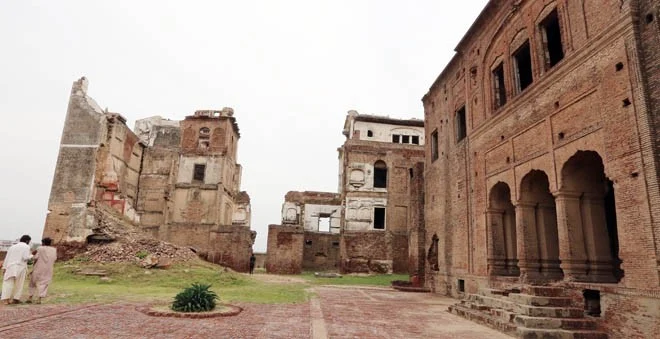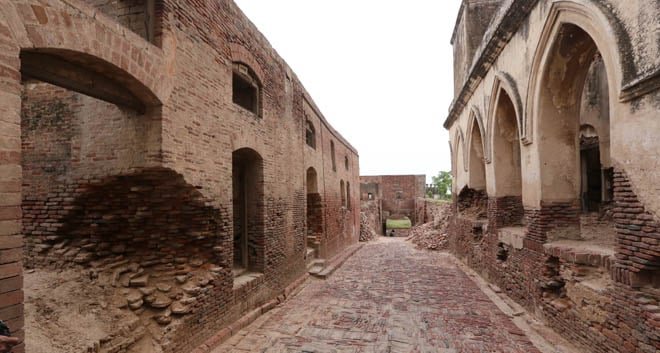The Sheikhupura Fort is an ancient wonder that nestles amidst a city named Sheikhupura, Punjab Province of Pakistan. Indeed, the marvellous structure speaks volumes about the great architectural beauty associated with diverse history. We are going to see the Sheikhupura Fort and its history in light of the mold of origins, importance, and the role it has played through various eras.
- Historical Background
1.1 History behind Sheikhupura Fort
Sheikhupura Fort was built in the year of 1607 AD under the Mughal Emperor Jahangir. Jahangir, as he loved the gardens and architectural projects ordered the fort in the honor of his beloved wife, Empress Nur Jahan. The fort was constructed in the surroundings of the city of Sheikhupura. The area was considered as an important zone in the Mughal Era.
1.2 Mughal Influence
Indeed, Mughal Empire was foremost in building and architectural excellence, and Sheikhupura Fort is no exception. It speaks volumes about the intricacy of the artistry and the grandeur of Mughal architecture concerning design and construction. Design: Actually, the design itself reflects typical Mughal influence, which is a combination of Persian, Central Asian, and Indian architectural styles.

- Architectural Significance
2.1 Design and Construction
Sheikupura Fort was an elongated structure that, due to its robust walls and magnificent gateways, was constructed over a vast area. The fort had a square shape, having a watch bastion at each corner. It showed a Mughal military architectural pattern meant for both defense and luxury.
2.2 Key Features
The Main Gate: Major entrance to the fort presents a magnificent gateway on which Mughal inscriptions and floral motifs are carved.
Within the fort, the palace precinct is where the Mughal kings along with their retinue used to reside. It is an intricately tiled palace and adorned with frescoes.
The Garden: As is expected of the Mughal culture, the gardens in the fort are lush, and were one of the most liked aspects of Emperor Jahangir.
- Historical Events
3.1 The Mughal Period
Actually, Sheikhupura Fort was one of the important places of the royal vanity and military expedition during the Mughal Era. To be specific, it was a retreat site for the Mughal emperors. Besides being a retreat place, it played an important part in the political vista of the region. The fort was also used to keep special guests and dignitaries.
3.2 The British Era
By the time of the 19th century British colonial period, it had fallen into disrepair. Indeed, the British administration used the materials from the fort in other buildings, causing quite some damage to it. It still was a place of some consequence in the region.
3.3 Post-Independence Period
The fort came to the newly born Pakistani government during the partition of British India in 1947. Renovation and restoration works are still happening at this fort, which still shows signs of damages of various attacks in history.
- Preservation and Restoration
4.1 Restoration Attempts
Different renovation works have been carried out in the past couple of years in the Sheikhupura Fort. This is targeted at bringing the fort to its actual shape and glory: restoring the defaced structure, preserving the relics, and popularizing the fort amongst the visitors and tourists.
4.2 Preservation Challenges
Several Issues arise in the conservation at Sheikhupura Fort. Most of them are weathering, pollution, and the effects brought about by tourism. Any restoration must be sensitive, sustainable to the historical importance of the fort.

- Cultural Impact
5.1 Influence on Local Culture
Sheikhupura Fort has influence in terms of local culture and heritage of Sheikhupura. It depicts symbolic meaning of enriched history and architectural excellence of this city.
5.2 Tourism and Education
It is quite often visited by tourists and history lovers. Much is still to be known about Mughal structure and Mughal history from the fort. There are seminars and guided tours held in order to make the common people aware of its importance.
- Conclusion
The Sheikhupura Fort stands as a time witness to architectural brilliance during the glory times of the Mughal Empire. Having survived all the odds which time had created against its existence for hundreds of years, the fort stands as heritage in the region. Moreover, with ongoing restoration works, it would be kept alive for generations onwards.
Frequently Asked Questions
What is the historical importance of Sheikhupura Fort?
Standing tall and yet another epitome of beauty is the Sheikhpura Fort. It indeed personifies the grand style of the Mughals in architecture, for the nature-royal retreat is even a military site that was built in the time of the Mughals.
Who commissioned Sheikhupura Fort?
What styles of Architecture does Sheikhupura Fort have?
The fort houses brilliant architectural beauty, that is typical of the Mughal kind, Persian, Central Asian and Indian architectural features.
What are some of the preservation issues with Sheikhupura Fort?
Some of the major issues from a point of view regarding preservations’ features are the attacks on the fort structure such as weathering and pollution resulting from tourist traffic.
How can visitors learn more about Sheikhupura Fort?
These are achieved via guided tours, educational programs, and other resource materials dealing with the history and architecture of the fort.




